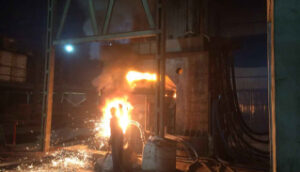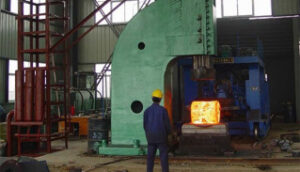Die casting is a precision manufacturing process that plays a pivotal role in producing intricate and high-quality metal components for various industries. Central to the success of die casting is the material used for the dies themselves. Hot work tool steel emerges as an indispensable choice due to its exceptional heat resistance, toughness, and wear resistance. In this comprehensive article, we will delve into the world of die casting, exploring why hot work tool steel is an essential material for this process, its key properties, applications, and the impact it has on the die casting industry.
1. Introduction to Die Casting
1.1 What is Die Casting?
Die casting is a manufacturing process that involves injecting molten metal into a mold cavity under high pressure. It is widely utilized for the production of complex and precise metal parts and components, ranging from small consumer electronics to large automotive components.
1.2 Importance of Die Casting in Manufacturing
Die casting is crucial in various industries due to its ability to create intricate shapes with high accuracy, minimal post-processing, and cost-effectiveness in high-volume production. It is a cornerstone of industries such as automotive, aerospace, consumer electronics, and general manufacturing.
1.3 Role of Tool Materials
The quality of die casting largely depends on the materials used for the dies, which are the molds into which the molten metal is injected. The choice of die material significantly impacts the efficiency, precision, and durability of the die casting process.
2. Sıcak İş Takım Çeliği: A Primer
2.1 Composition and Alloying Elements
Sıcak iş takım çeliği is specifically designed to perform under high-temperature conditions. It typically contains alloying elements such as chromium, tungsten, molybdenum, and vanadium. These elements contribute to its heat resistance, toughness, and wear resistance.
2.2 Key Properties
Sıcak iş takım çeliği exhibits remarkable properties, including high heat resistance, superior toughness, exceptional wear resistance, efficient thermal conductivity, and dimensional stability. These properties make it ideal for applications involving continuous exposure to extreme temperatures.
2.3 Significance in Die Casting
Hot work tool steel’s ability to maintain its mechanical properties even under high-temperature conditions is crucial in die casting. It ensures that the dies remain durable, retain their precision, and produce high-quality castings consistently.
3. Die Casting Applications
3.1 Automotive Industry
The automotive sector extensively relies on die casting for the production of engine components, transmission parts, and various structural elements. The precision and efficiency of die casting contribute to the quality and performance of vehicles.
3.2 Aerospace Sector
In the aerospace industry, die casting is utilized for manufacturing critical components, including aircraft engine parts and structural elements. The process’s ability to create complex shapes with tight tolerances is vital for aerospace applications.
3.3 Consumer Electronics
Consumer electronics benefit from die casting for the production of lightweight and precise components used in devices such as smartphones, laptops, and cameras. Die-cast parts contribute to the aesthetics and functionality of these products.
3.4 General Manufacturing
Die casting finds applications in various general manufacturing processes, including the production of hardware, lighting fixtures, plumbing components, and more. Its versatility and efficiency make it a preferred choice for cost-effective production.
4. The Role of Hot Work Tool Steel in Die Casting
4.1 Die Casting Dies
Die casting dies, typically made from hot work tool steel, are the heart of the die casting process. These dies withstand the high-temperature molten metal, high-pressure injection, and rapid cooling cycles. Hot work tool steel ensures the dies maintain their mechanical properties and dimensional stability throughout the process.
4.2 Benefits in Die Casting
Hot work tool steel offers several advantages in die casting:
- High Heat Resistance: It withstands the extreme temperatures of molten metal without softening or deforming.
- Exceptional Toughness: Even under rapid temperature changes, hot work tool steel maintains its toughness, preventing fractures.
- Superior Wear Resistance: It resists wear from the repeated injection of molten metal, ensuring die longevity.
- Efficient Thermal Conductivity: Good thermal conductivity helps dissipate heat, preventing localized overheating.
- Dimensional Stability: Hot work tool steel retains its shape and dimensions, crucial for precision in die-cast parts.
4.3 Challenges and Solutions
Die casting can pose challenges to tool materials, including thermal fatigue and erosion from molten metal. Advances in hot work tool steel alloys, coatings, and heat treatment techniques address these challenges, extending the life of die casting dies and improving overall efficiency.
5. Advancements in Hot Work Tool Steel for Die Casting
5.1 Improved Alloys
Continual research and development have led to the formulation of advanced hot work tool steel alloys tailored specifically for die casting applications. These alloys offer enhanced heat resistance, wear resistance, and longevity.

